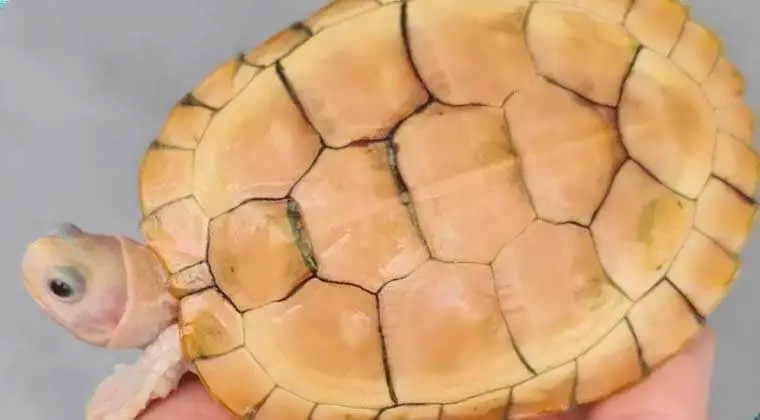Yes, turtles do have scales. Turtles are reptiles, and all reptiles have scales. The scales on a turtle’s body are made of keratin, just like human fingernails or claws.
These scales provide protection from predators as well as water loss in aquatic environments. They also help the turtle to move by providing traction on land and in water. Different species of turtles may have different types of scales – some may be smooth and flat while others can be ridged or spiky for added protection against predators.
In addition to their bodies, turtles also have scutes large plates that make up part of their shells which help to protect them from harm even more than the individual scales would alone!
Do Turtles Have Skin Or Scales?
Turtles have a unique form of skin that is covered in scales. These scales are made up of keratin, the same material that makes up our fingernails and hair. The outer layer of these scutes or scales is made from horny plates which can be smooth or ridged depending on the type of turtle.
Beneath this top layer lies another layer composed primarily of connective tissue, which helps protect them from predators and parasites.
Where are the Scales on a Turtle?
The scales on a turtle are located all over its body, from the bridge of its neck down to its tail. They have thick overlapping plates called scutes that cover most of the top and bottom parts of their shells. These scutes provide protection for them by making it difficult for predators to get a grip on them.
The carapace (top part) is made up of around 40-50 individual scutes, while the plastron (bottom part) has anywhere between 12-24 depending on the species. On closer inspection, you may even see small bumps along these scutes which are actually tiny scales that help make them more hydrodynamic in the water!
Why Do Sea Turtles Have Scales?
Sea turtles are one of the most ancient creatures on Earth, with a fossil record that dates back over 200 million years. They have evolved from their primitive ancestors to become incredible swimmers and navigators who can travel thousands of miles in search of food and mates. One feature that all sea turtles share is scaled, which covers the majority of their body except for the head, neck, feet, and flippers.
Scales help protect them from parasites and other predators by providing an extra layer of armor against bites or scratches. Additionally, they also provide insulation to keep them warm in cold waters as well as help reduce drag when swimming long distances through the ocean currents.
Finally, scales may also aid in camouflage by breaking up the turtle’s outline when viewed from below or above water level; this makes it harder for predators to spot them in natural surroundings. All these functions make scales essential for a sea turtle’s survival in its harsh marine environment!
Do Snakes And Turtles Have Scales?
Yes, both snakes and turtles have scales. Snakes are covered in overlapping scales made of keratin which provide protection from predators as well as help the snake to move smoothly over surfaces. Turtles, on the other hand, have a hard protective shell made up of bony plates called scutes that are covered by a thin layer of skin.
The bumps or ridges on their shells may look like scales but they’re not true scales like those found on snakes. Although turtles do not possess true scales they still benefit from having this thick outer layer which helps protect them against attack and provides an extra layer of insulation in cold environments.
Why Do Turtles Shed Their Scales?
Turtles are a unique creature that can be found all over the world. As part of their natural growth and development, turtles will periodically shed their scales as they grow in size. This process is known as ecdysis or molting, and it’s an important part of how turtles keep healthy and maintain their protective outer layer of skin.
During this time, the old scutes (scales) on a turtle’s shell will become loose and begin to fall off. The shedding process usually happens in pieces rather than all at once, so you may notice small patches of new scales on your turtle as its old ones come off. Turtles shed their scales for several reasons including providing them with extra protection from predators, parasites, and infection; helping them regulate body temperature; providing support for growing muscles; preventing injury due to too tight shells; allowing them to fit into smaller spaces better; enabling them to take advantage of certain types of food sources; plus many more!
Shedding also helps increase mobility by reducing friction against surfaces like rocks or trees while they swim or walk around.
Do Turtles Have Scale?
Conclusion
Turtles have a unique type of skin which is made up of scutes and scales. Turtles rely on their scutes and scales to keep them safe from predators as well as provide insulation in the water. They are able to regenerate these structures when needed, making them impressive creatures with incredible adaptations for survival.
